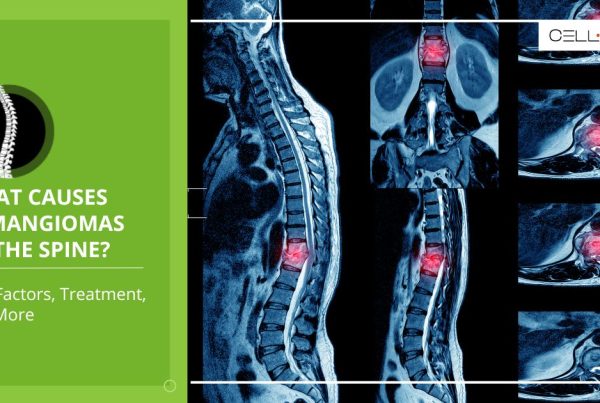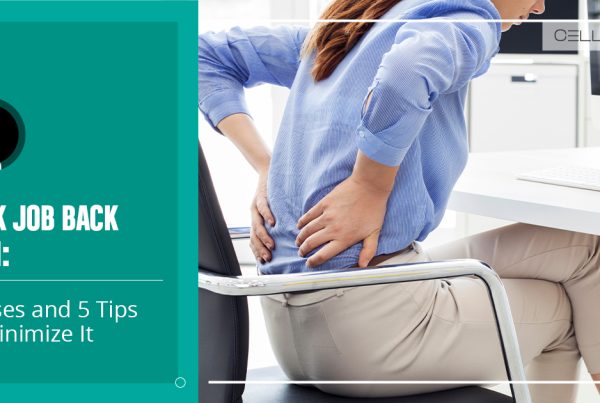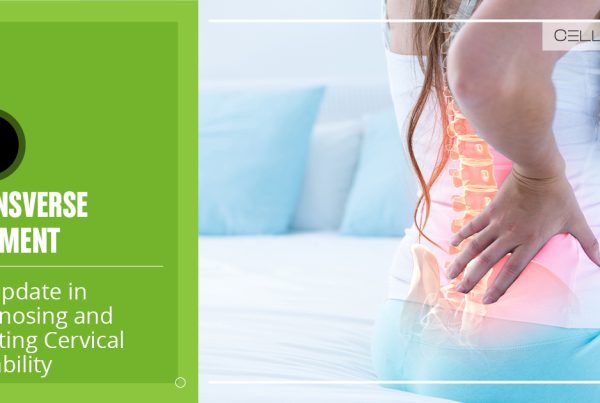Published on: December 29, 2022 | Updated on: August 29, 2024
Chronic pain is a health condition that persists over 12 weeks even after the treatment. This type of pain is often caused after an operation, and patients keep experiencing the pain despite using medication.
People who have diabetes and arthritis usually complain about chronic pain. But it can affect any person in any body part, even after all the medical reports are clear. Fortunately, you can find multiple alternative treatments for chronic pain that don’t involve surgery.
Some techniques might not require any equipment, as therapists and doctors try to empower the natural healing ability of the body to reduce chronic pain. Although such treatments require time, it’s better to wait and observe the response of the natural healing components.
Here are eight effective alternative treatments for chronic pain:
1. Acupuncture
Acupuncture is a part of traditional Chinese medicine (TCM), which focuses on changing the course of energy inside the body. Although this alternative method for chronic pain is pseudoscience, doctors and physicians still rely on acupuncture.
An acupuncturist injects very fine and thin needles into the patient’s acupoints (different points on the body where acupuncture works). The needles stimulate healing and reduce pain by releasing endorphins (natural pain killers.)
Stimulating biochemicals inside the body boosts healing, reduces chronic pain, and promotes emotional well-being by triggering serotonin.
Patients suffering from chronic pain like whiplash (hyperextended neck) or sports injury prefer acupuncture as it’s the safest alternative treatment. Even today, there are also no side effects that make acupuncture a successful treatment.
However, acupuncturists must delicately treat their patients since the needles are very thin and may break due to excessive force. A broken needle might be painful and may cause bruises and bleeding.
2. Physical Exercise
Physical activities have always been the best remedy for chronic pain as they keep motor skills mobile and the mood healthy. The most common forms of these activities include regular exercise and walking.
If you have chronic pain and experience tight muscles often, sparing 5-10 minutes daily doing regular exercise can ease your pain. Here are a few exercises you can follow:
Stretching
Chronic muscular pain occurs due to several reasons, including:
- Stress
- Overuse
- Minor injury
You will experience pain in a small area of your body, and stretching that specific muscle can help reduce the pain. For example, if you have chronic pain in your lower back, follow these steps to stretch that muscle:
- Sit on the ground on your knees and place your arms in front of you.
- Spread your arms on the floor. Now you are on your knees and arms.
- Sink back and place your hips on your heels.
- Keep your belly on your thighs to fully stretch your lower back.
- Lift your body upwards using your thighs and palms without lifting from the ground.
- Focus on the tight muscle and keep this pose for 1 minute.
The above stretch is known as the child’s pose, relieving lower back pain if you regularly follow it.
3. Chiropractic Manipulation
Chiropractic or spinal manipulation is when a chiropractor presses specific spinal joints to reduce pain and treat an injury. This procedure needs expertise because the spinal cord sends every physical activity.
A chiropractor may use instruments or their hands to exert sudden force on the spinal cord. This alternative treatment for chronic pain, especially in the neck, head, and back, is safe if the chiropractor is professional and licensed.
You don’t need to prepare for this treatment especially. However, the chiropractor might check your medical history and guide you accordingly before the treatment. Remember to take a light meal and hydrate yourself before visiting for the chiropractic session.
4. Stress-Reduction
Patients suffering from chronic muscular pain must not stress themselves as it worsens their health. That’s why physicians suggest the following stress-reduction techniques to treat chronic pain:
Relaxation
In relaxation therapy, the doctor will guide you to focus on your breath and release tension from your body. As stress contracts your muscles and makes the pain worse, you must stay calm during the relaxation therapy to relax your muscles.
Research shows this therapy helps patients suffering from osteoarthritis, headaches, and fibromyalgia.
Guided Imagery
That’s another stress-reduction technique in which your doctor or physician will show you some images to divert your focus. The purpose of showing you different images is to make you feel relaxed and get rid of stress.
Hypnosis
Clinical therapy hypnotherapy is one of the most successful techniques to treat stress and chronic pain. The therapist might need 6-8 sessions with the patient to send them in a relaxed state to reduce anxiety.
5. Supplements and Vitamins
Patients suffering from chronic pain might want to use supplements to avoid surgery. The supplements and vitamins boost the natural healing process and reduce the severity of pain. For example, doctors recommend fish oil to relieve pain due to chronic swelling.
You can find fish oil pills or make organic fish oil a part of your diet. However, you must be careful about the dosage of supplements and vitamins. Some vitamins might damage internal organs and nerves if taken in large quantities.
A supplement known as ginkgo biloba is a blood thinner for heart patients. If you increase its dosage more than the prescribed one, you might get increased bleeding on minor injuries.
So, always consult your doctor if you are taking supplements and vitamins as alternative treatments for chronic pain to get the best results.
6. Biofeedback
Sometimes, doctors can’t identify the area in which patients feel chronic pain. So, a technique known as biofeedback is used to locate the affected area and treat the pain.
In this process, the doctor uses sensors or asks you to make movements to identify the affected muscle. The sensors display the result digitally, and using that result, the doctor will adjust the patient’s physical movements.
The physiological data helps doctors diagnose and change patients’ activities to treat chronic pain. The biofeedback data might include the following:
- Weight
- Blood pressure
- Temperature
- Muscle activity
- Brainwaves
- Heart rate
After the therapy, the doctor will instruct the patient on what changes they must make to reduce pain and heal the injury.
7. Marijuana Use
Although marijuana has a bad reputation as it makes people go high, its medicinal use helps patients reduce chronic pain. Marijuana has several properties through which it can treat neuropathic pain (pain caused by damaged nerves). It can also reduce nausea caused by chemotherapy.
However, doctors go for marijuana treatment when all other options have failed to treat the pain. The adverse side effects of marijuana, like addiction and psychological disorders, must also be kept in mind while using this treatment.
8. Orthobiologic Methods
Orthobiologic techniques are modern regenerative medicinal methods to treat chronic pain. These non-invasive methods use the patient’s cells and tissues to repair the damaged area. That’s why they have a high acceptance rate by the patients’ bodies.
You can find the following two orthobiologic methods at CELLAXYS as alternative treatments for chronic pain. Your doctor will first see the cause of your chronic pain and then opt for any method accordingly.
Cell-Based Therapies
The cell-based therapy uses the stem cells of the patients. These cells are in raw form and can generate almost any cell type in the body. That’s why cell-based therapy is also known as stem cell therapy.
The only condition for cell-based therapy is that the stem cells must be active. Doctors first extract these cells from the patient’s body and examine their status. Once the stem cells are ready, the doctors will inject them into the affected area.
There are two types of cell-based therapies:
- Minimally Manipulated Adipose Tissue Transplant (MMAT). A doctor will process stem cells from the patient’s adipose or fatty tissue. After examining the stem cells’ status, the doctor will inject those cells into the injured muscle to reduce chronic pain.
- Bone Marrow Aspirate Concentrate (BMAC). A doctor will extract healthy cells from the patient’s bone marrow and inject them into the painful area.
MMAT and BMAC take 1.5 to 2 hours to complete, including sampling and treatment. Once the cell-based therapy is done, patients can go home after a few hours.
Platelet-Rich Plasma Therapy (PRP)
Platelets are essential in our blood as they play a defensive role whenever an injury occurs. The PRP treatment for chronic pain involves the patient’s blood sample to separate platelets. After that, the specimen is sent to the lab for examination.
The doctor will check the status of the platelets and inject them into the affected area to promote healing and reduce chronic pain.
Platelets have three significant responsibilities in our bodies:
- Boost new tissue generation by releasing ten growth factors.
- Send signals to boost healing in the blood.
- Create fibrin, a tough protein for blood contraction and retraction.
The healing process also increases when platelets increase inside the body. PRP is a standard alternative treatment for chronic pain, and it takes around 45 minutes to complete.
Sources
Footnotes
- Urits I, Schwartz RH, Orhurhu V, Maganty NV, Reilly BT, Patel PM, Wie C, Kaye AD, Mancuso KF, Kaye AJ, Viswanath O. A comprehensive review of alternative therapies for the management of chronic pain patients: acupuncture, tai chi, osteopathic manipulative medicine, and chiropractic care. Advances in therapy. 2021;38:76-89.
- Jensen MP, Day MA, Miró J. Neuromodulatory treatments for chronic pain: efficacy and mechanisms. Nature Reviews Neurology. 2014;10(3):167-78.
- Turk DC. Customizing treatment for chronic pain patients: who, what, and why. The Clinical Journal of Pain. 1990;6(4):255-70.
- Van Hal M, Dydyk AM, Green MS. Acupuncture. 2023 Jul 24. In: StatPearls [Internet]. Treasure Island (FL): StatPearls Publishing; 2023.
- Meeus M, Nijs J, Vanderheiden T, Baert I, Descheemaeker F, Struyf F. The effect of relaxation therapy on autonomic functioning, symptoms and daily functioning, in patients with chronic fatigue syndrome or fibromyalgia: a systematic review. Clinical Rehabilitation. 2015;29(3):221-33.
References
- Chronic Pain: What You Need To Know. National Center for Complementary and Integrative Health. Accessed 9/13/2023.
- Alternative Treatments for Chronic Pain. WebMD. Accessed 9/13/2023.
- Chiropractic care for pain relief. Harvard Health Publishing. Accessed 9/13/2023.
- Hypnosis For Stress: How It Works, Examples, & Effectiveness. Choosing Therapy. Accessed 9/13/2023.
- Blood-thinning foods, drinks, and supplements. Medical News Today. Accessed 9/13/2023.
- Pain. Centers for Disease Control and Prevention. Accessed 9/13/2023.
CELLAXYS does not offer Stem Cell Therapy as a cure for any medical condition. No statements or treatments presented by Cellaxys have been evaluated or approved by the Food and Drug Administration (FDA). This site contains no medical advice. All statements and opinions are provided for educational and informational purposes only.
Dr Pouya Mohajer
Author
Pouya Mohajer, M.D. is the Director of Spine and Interventional Medicine for CELLAXYS: Age, Regenerative, and Interventional Medicine Centers. He has over 20 years of experience in pain management, perioperative medicine, and anesthesiology. Dr. Mohajer founded and is the Medical Director of Southern Nevada Pain Specialists and PRIMMED Clinics. He has dedicated his career to surgical innovation and scientific advancement. More about the doctor on this page.
Dr Pejman Bady
Contributor
Dr. Pejman Bady began his career over 20 years ago in Family/Emergency Medicine, working in fast-paced emergency departments in Nevada and Kansas. He has served the people of Las Vegas as a physician for over two decades. Throughout this time, he has been met with much acclaim and is now the head of Emergency Medical Services in Nye County, Nevada. More about the doctor on this page.









